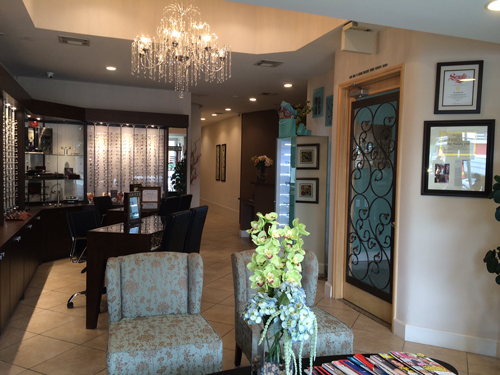

After about six years of working for others, Ani Halabi, OD, decided she wanted to open her own practice. But it was very important to her not to go into debt to accomplish this goal, she says. So she kept her full-time job and also rented a small space—an exam room and a small area where she could display eyewear—from a gynecologist friend. His office would be closed during the evening hours and Saturdays when she saw the relatively few patients who called for appointments. “I didn’t have any employees; the phones were forwarded to my husband’s line, and he set up my appointments. I worked as an optician before optometry school, so I did it all.”
After about a year, she had built up a small patient base and saved enough money to open Glendale Family Optometry in Glendale,
California, in a new 1,200-square-foot space. Her patient load began to increase, allowing her first to cut back and then leave her former position. “I hired my first official receptionist,” she recalls, and just before the couple’s first daughter was born in late 2014, she hired an optician. She now has two daughters under age 2, two opticians, two receptionists and a part-time associate—also a mother of a young child. Dr. Halabi typically sees patients between 18 and 23 hours per week, on two or three days, while her associate usually works 16 hours per week.
“I bought exam room equipment and some small dispensing units for my first location, but from the first day, I started to make money since I had a very low overhead,” she says. Even as she moved into a larger space—for which she negotiated hard for the best lease terms—she’s been able to pay for her purchases out of pocket.
She says she had an idea that she wanted a contemporary, stylish office, “but my budget was an important factor. It’s a boutique style, and there are interesting focal points, such as a chandelier, but I spend money carefully,” she says. She looks back at the time and says, “It’s the hardest thing I’ve ever done, but I want people, especially moms, to know that it’s doable.” She credits her husband’s support and flexible schedule as a self-employed real estate development consultant with making it possible.





